NuclearPower
Latest
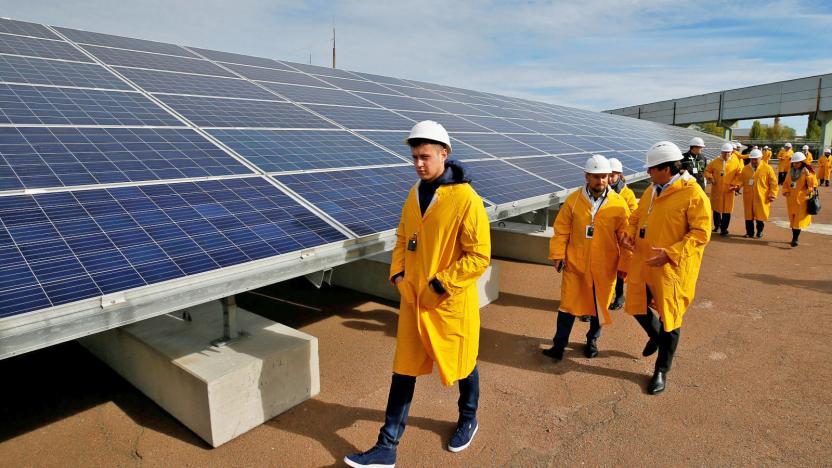
Chernobyl’s uninhabitable land is the home of a new solar plant
In 1986, the world experienced its worst nuclear disaster to date when an accident at the Chernobyl nuclear power plant exposed large swaths of Europe and the Soviet Union to radioactive material. The area around the now defunct plant is uninhabitable and humans won't be able to safely live there again for another 24,000 years. But that land isn't totally going to waste, as a small solar plant has now been constructed on the site.

After Math: Robot revolutionaries
The whole "fear of SkyNet" trope is a bit moot at this point, seeing as how robots have already infiltrated our roads, skies and cafeteria-style eateries. You can already see it happening with Lyft adding 30 self-driving vehicles to its Las Vegas fleet, Sphero debuting yet another domestic robopanion, and gangs leveraging drone swarms to blindside the FBI. Numbers, because how else are we going to learn to speak the binary language of our future overlords?
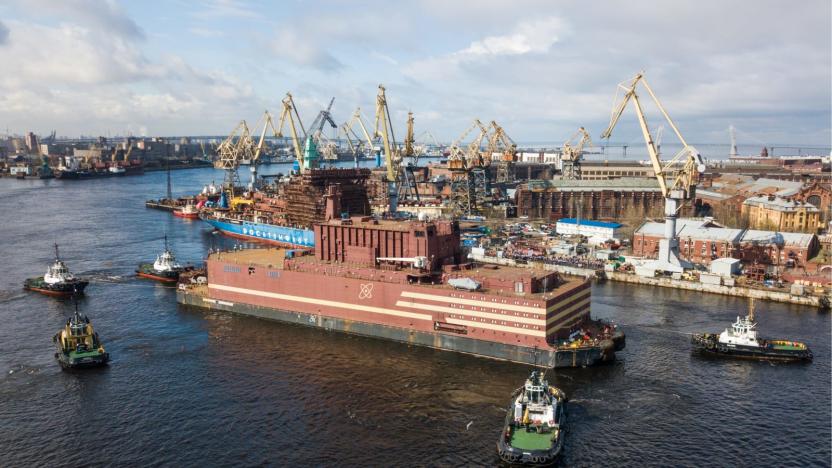
Russia launches floating nuclear power plant on Baltic Sea (updated)
Multiple nations, including China and the US, have pursued offshore or floating nuclear reactors, and now Russia will give it a go. Russia has launched a floating nuclear power plant or its own, the 70-megawatt Academik Lomonosov, on the Baltic Sea. Starting from St. Petersburg, it will be towed around Norway to a Russian town called Murmansk to take on nuclear fuel. From there, it will head to the Arctic to power the oil-industry town of Pevek, along with a desalination plant and drilling rigs.
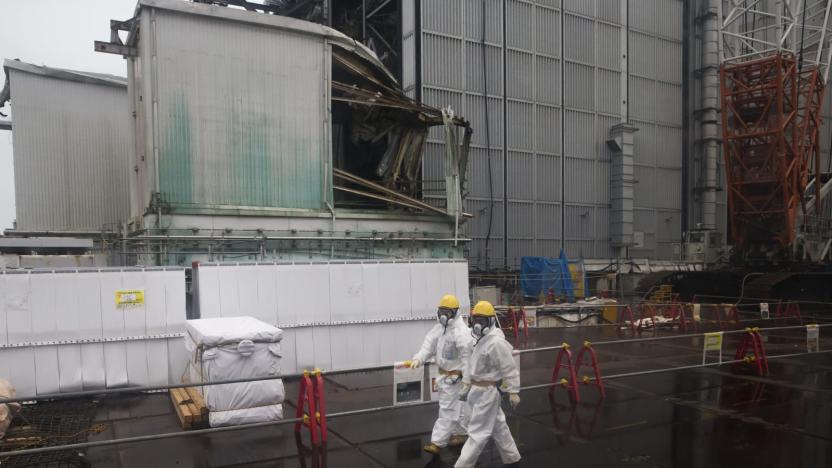
Japan has delayed the Fukushima nuclear plant cleanup again
There's been another delay in the plan to clean up the Fukushima nuclear plant. The Japan Times reported today that the country's government approved another revision to the cleanup schedule that will push removal of radioactive fuel rods from reactor Units 1 and 2 three years further down the road. This latest delay, which is due to newly uncovered damage in the storage pools, means that the cleanup is now six years behind schedule.

‘Safer’ thorium reactor trials could salvage nuclear power
A Dutch nuclear research institute is conducting the first experiment in close to five decades on molten-salt nuclear reactors based on thorium. Long hailed as a potential "safer" nuclear power, thorium reactor research could provide clean, affordable and "large-scale energy production." That's according to scientists from the Nuclear Research and Consulting Group (NRG) in Petten, Netherlands. If successful, the trials could result in a switch to next-gen thorium reactors, which are less likely to suffer meltdowns in comparison to their current uranium-based counterparts.
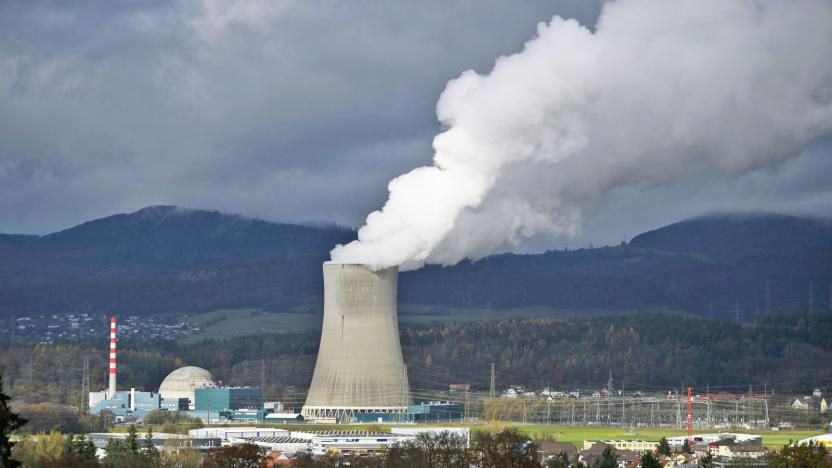
Switzerland votes for an end to nuclear power
Countries like the UK might still embrace nuclear power, but Switzerland is headed in the opposite direction. The country has voted in favor of an energy plan that will eventually eliminate any use of nuclear power, shifting its efforts toward renewable sources like solar and wind. While there's no timetable for the nuclear shutdown, which was chosen through a binding referendum. However, efforts should get underway in January 2018 -- you may hear more details by then.
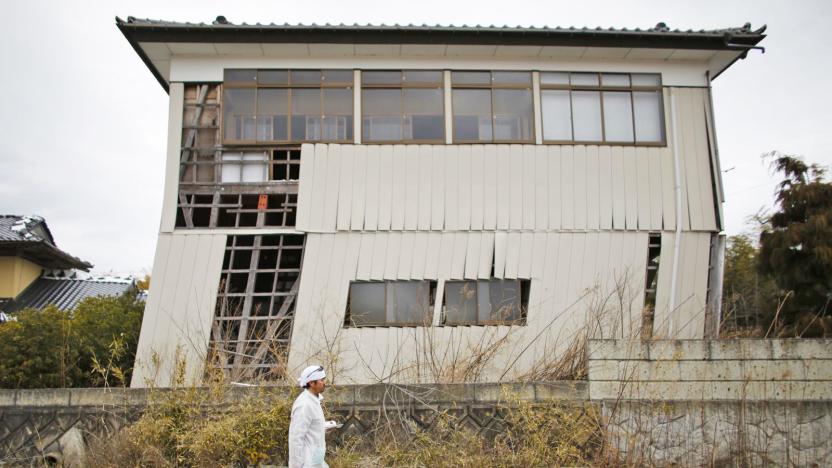
Study says Fukushima region is safe enough for people to return
Fukushima's ill-fated nuclear power plant may still be so dangerous that it kills robots, but residents are trickling back as officials decide that radiation levels are safe in some areas. But are they safe enough that you'd never have to worry about long-term effects? According to two researchers, the answer is yes. They've published a study indicating that the cesium radiation levels in Date, 37 miles away from the Fukushima plant, have dropped so quickly (60 percent just between 2011 and 2013) that residents shouldn't suffer any harm. In fact, they may be safer than usual. The median lifetime radiation dose (18 millisieverts) should be less than what you typically receive just by living on Earth.

US Navy decommissions the first nuclear-powered aircraft carrier
It's the end of an era for the US sea power, in more ways than one: the Navy has decommissioned the USS Enterprise (CVN-65), the world's first nuclear-powered aircraft carrier. The vessel launched in 1961 and is mainly known for playing a pivotal role in several major incidents and conflicts, including the Cuban Missile Crisis, the Vietnam War and the 2003 Iraq War. However, it also served as the quintessential showcase for what nuclear ships could do. Its eight reactors let it run for years at a time, all the while making more room for the aircraft and their fuel.

Japan axes its 'fast' nuclear reactor prototype
Japan's Monju reactor was supposed to be a more efficient alternative to conventional nuclear power. The "fast," sodium-cooled prototype plant would produce more plutonium than it ate up, making it relatively easy to recycle fuel. However, that's not how it worked out. A leak and fire led to a 15-year shutdown starting in 1995, and the reactor has been plagued by failures, mismanagement and political fights ever since. And now, the government has had enough: it's planning to close Monju once and for all. It would be slower and more expensive to fully restart the reactor than to shut it down (the equivalent of $4.6 billion versus $3.2 billion), officials claim, and the focus is on developing more practical fast reactors instead.

Diamonds convert nuclear waste into clean batteries
Nuclear waste is normally a major environmental headache, but it could soon be a source of clean energy. Scientists have developed a method of turning that waste into batteries using diamond. If you encapsulate short-range radioactive material in a human-made diamond, you can generate a small electrical charge even as you completely block harmful radiation. While the team used a nickel isotope for its tests, it ultimately expects to do this using the carbon isotope you find in graphite blocks from nuclear power plants.
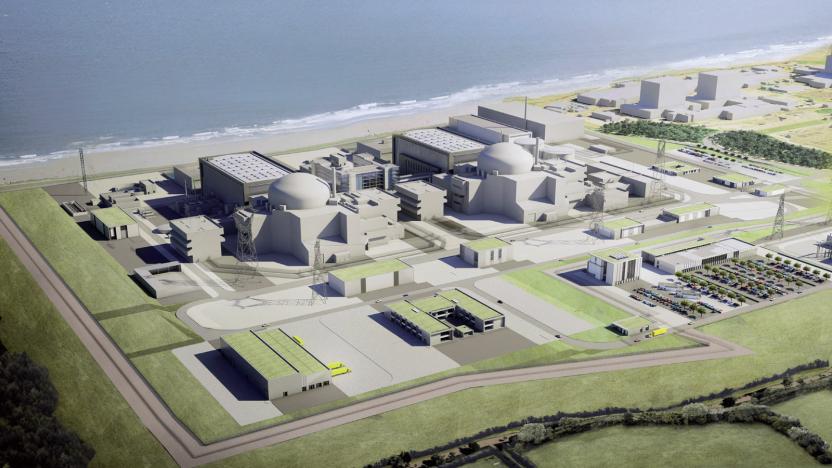
Mammoth UK nuclear plant receives final government thumbs-up
Eight years after it was first proposed, the UK government today gave the final go-ahead for Hinkley Point C, a new nuclear power plant to be built in Somerset. The two-reactor site is expected to become operational in 2025, at which point the majority of live nuclear power stations in the UK will be decommissioned, or only a few years away from the same fate. Point C is slated to generate 3,200 megawatts -- roughly 7 percent of the UK's total consumption and well over double the output of any currently operational site. The first new nuclear plant to be built in the UK in decades, it'll also be one of the priciest projects the world has even seen, with conservative estimates putting construction costs alone at £18 billion.
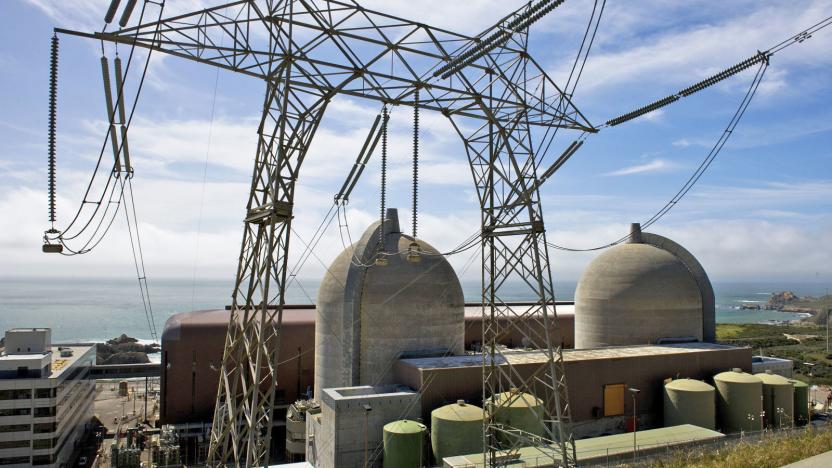
California's last nuclear power plant to close in 2025
California's nuclear-powered dream has an expiration date. The state's utility conglomerate Pacific Gas and Electric (PG&E) announced yesterday that they will close the last remaining nuclear plants by 2025. They'll replace the output with renewable energy and better efficiency in other stations. But, barring any changes to the moratorium on new plants, it's likely the end for atomic power in the Golden State.

UK's proposed nuclear plant is one of the costliest things on Earth
Nuclear power has been around for decades, but it still isn't cheap... in fact, it may result in one of the most expensive objects on the planet. Cost estimates for the UK's proposed Hinkley Point C reactor have crept up to £24 billion (about $35 billion), making even some of humanity's more ambitious construction projects seem like small potatoes. The Large Hadron Collider cost "just" $5.8 billion to build, the BBC notes. About the only thing that rivals Hinkley on Earth is Chevron's recently completed $54 billion natural gas plant in Australia. If you're not picky, the International Space Station's collective modules top everything at a total of $110 billion.
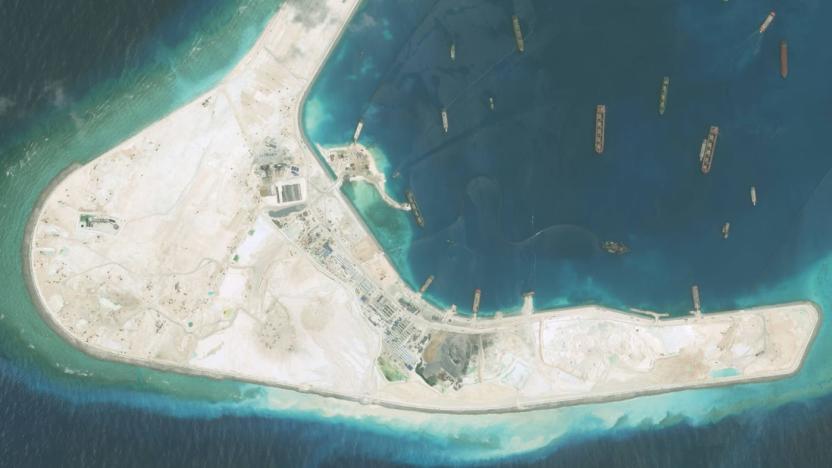
China eyes floating nuclear power plants for remote locations
It's difficult to provide power to offshore projects like oil rigs and a recently built island chain in the South China Sea. However, China has a solution: floating nuclear power plants. According to the state-run newspaper Global Times, the vessels are being developed with the goal of providing electricity to offshore construction projects, even in remote locations. China Shipbuilding Industry Corporation, a state-run company, is working to build an entire fleet of the floating power plants citing strong demand for the ships.

Iran shuts down most of its nuclear program
Iran promised to shut down the majority of its nuclear program in return for an end to stiff economic sanctions, and it's making good on its word. International Atomic Energy Agency inspectors have confirmed that Iran is meeting its end of a 2015 deal that will limit its ability to produce nuclear weapons. The terms had it shut down two thirds of its nuclear centrifuges, eliminate 98 percent of its low-enriched uranium supplies, halt construction of a key reactor and curb both its refinement as well as its research for the next 15 years. It's also subject to tighter inspections that theoretically prevent it from restarting weapons development within the next 25 years.

The biggest data center in Russia will be nuclear powered
According to the news agency Telecom Daily, the Rosenergoatom power company is building what will be the largest data center in Russia -- and they're plopping it right on top of the Kalinin power station. Located about 120 miles northwest of Moscow, the station will provide the 80 MW that engineers estimate will be needed to power the data center's 10,000 or so server racks. The construction is projected to cost $975 million, not including the IT buildout.

The politics of nuclear technology, from Hiroshima to Iran
Gaze into a clear night sky for long enough and a nagging thought will worm its way into your brain: It's highly probable that intelligent life exists elsewhere in the universe, but if so, why haven't we found it yet? This is known as the Fermi Paradox and, among several explanations, it has one awfully pessimistic solution: We appear to be alone in the universe because all civilizations end up destroying themselves soon after developing space-capable technology. One way that could happen is through nuclear warfare, a topic hot on the minds of Earth's most powerful citizens. There are more than 15,000 nuclear warheads secreted around the world, and 90 percent of them are in the hands of the United States and Russia, two nations with a historically frosty relationship. But Iran, a country with no known nuclear warheads, dominates the international conversation. It's actively testing new weapons-delivery systems, even as world powers attempt to halt the creation of more apocalyptic weapons. As modern history demonstrates, that's not an easy task.

Japan to restart nuclear power tomorrow after energy prices soar
It's been four years since an earthquake and tsunami knocked out the nuclear reactor at Fukushima, causing a meltdown and mass evacuation of the local area. The tragedy eventually saw the shut down of all of the nation's nuclear power plants, with the last facilities closing down in late 2013. This week, the country is going to start one of them back up: tomorrow, Japan will switch on reactor No.1 at the Sendai nuclear power plant.

Stuxnet worm entered Iran's nuclear facilities through hacked suppliers
You may have heard the common story of how Stuxnet spread: the United States and Israel reportedly developed the worm in the mid-2000s to mess with Iran's nuclear program by damaging equipment, and first unleashed it on Iran's Natanz nuclear facility through infected USB drives. It got out of control, however, and escaped into the wild (that is, the internet) sometime later. Relatively straightforward, right? Well, you'll have to toss that version of events aside -- a new book, Countdown to Zero Day, explains that this digital assault played out very differently.

Researchers developing reactor powered by nuclear waste
Nuclear energy could have curbed C02 emissions long ago if not for one problem: the waste is toxic for over 100,000 years. That's quite a commitment for humanity, but Hitachi thinks it has the answer: burn the spent fuel in small reactors to generate more power. That would produce manageable waste that would be harmless in a mere century or so. Hitachi has been studying such reactors for awhile with GE, and has enlisted MIT, the University of Michigan (U-M) and University of California, Berkeley (UCB) for the next phase. The goal is to re-purpose existing boiling water reactors (RBWRs), so that their turbines, safety systems and other components could be reused. Researchers could then focus on the core tech needed to burn highly refined "transuranium elements," aka spent nuclear fuel. They've enlisted the three schools to jointly analyze the safety and performance of potential core designs, with the aim of eventually building a test reactor. Commercialization is probably decades off, but the way toxic waste is building up, they may want to hustle it along.









